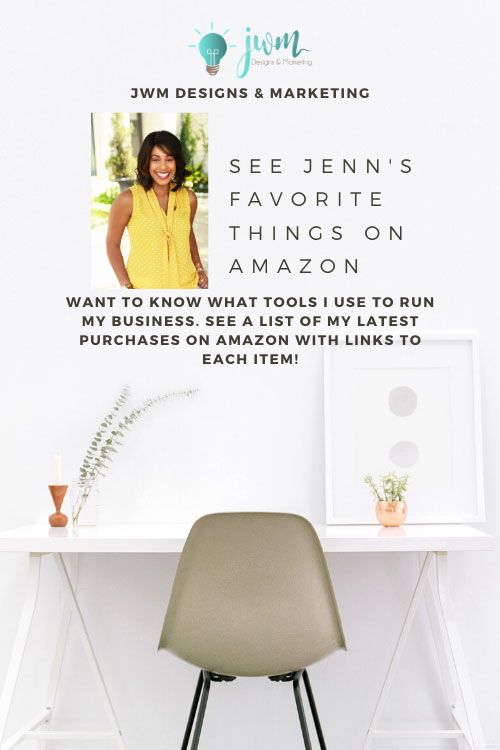Hi Legacy Builders. Welcome back to my blog. I’m Jenn McNeely with JWM Designs & Marketing and in this post, I am going to do a pros and cons comparison between using Shopify Lite versus Shopify’s other plans for selling products online. If you are thinking about starting a business selling products online, in person, or both, you need a way simple way to take orders, process payments, and complete fulfillment of those orders. There are so many options available to you whether is Shopify, Squarespace, Woo Commerce, Etsy, PayPal, or several others. It can be overwhelming when deciding which platform fits your business and current needs. In a prior video, I did a comparison between three popular website page builders: Wix, Shopify, and Squarespace. In that video, I talked about the pros and cons of each platform and why I believed Shopify to be the best platform for eCommerce.
Recent economic reports show that since 2020, new business filings have quadrupled throughout the United States, and new online retailers emerging as a large percentage of the influx of new business. Online shopping is at an all-time high. If you are thinking about starting a business or expanding your business to online retailing, now is the time to get your e-commerce business up and running. But how do you get started? Well, you got plenty of options to choose from. In this video, I’m only going to focus on Shopify’s e-commerce offerings but I will do additional videos about other e-commerce platforms.
What Is Shopify?
Before I discuss Shopify plans vs Shopify Lite, I want to make sure you know what Shopify is. Shopify is a website building platform that specializes in constructing and maintaining e-commerce stores with little to no manual code editing. Shopify provides a variety of options when it comes to templates and design options for an online store as well as several integrations with other retail applications. Out of the box, Shopify comes with most of the key features you will need to get your store up and running, like a payment processor, setting up shipping labels, dropshipping (where the order processing and fulfillment are done by a dropshipping provider like Amazon fulfillment), charging the correct sales tax, selling on social media channels, and a bunch of online marketing tools. They are constantly innovating and integrating new e-commerce features and they do a great job for online sellers.
What’s the Difference Between Shopify and Shopify Lite?
Shopify offers different plans for setting up an e-commerce store. Under the traditional offerings, you receive a more robust and comprehensive online store experience with multiple sales channels. From plans starting at $29 per month to $299 per month, you will have access to a complete website that includes an online storefront, a point of sale (for non-online sales), and a buy button that can be added to other online websites platforms including WordPress, Squarespace, Wix, and Weebly or social media sites like Facebook and Instagram. Under the full Shopify plans, you have plenty of design options for your website with many themes to choose from that are both free and paid. If you are starting from scratch, you can design and customize an online experience that fits your brand.
What is Shopify Lite?
As the name suggests, Shopify Lite is the less robust plan that Shopify offers businesses that do not need a comprehensive e-commerce setup. With Shopify Lite, you get access to most of Shopify’s e-commerce dashboard and apps for $9 a month, a point of sale (for non-online sales), and a buy button that can be added to other online website platforms. The main difference between the standard plans and the lite version is that you do not get an online store hosted on Shopify’s platform. Think of it this way, the storefront is where the customers can see your products and purchase them. The dashboard is the backend of the store where payments are actually processed, inventory is managed, and orders are fulfilled.
Why would someone purchase Shopify Lite?
The two main reasons why the Lite version may be a better fit for your business are the cost and business needs do not require an online storefront. As I mentioned, the most basic plan starts at $29 a month while the lite version costs $9 a month that you may pay month-to-month, annually, or biannually. While both the lite and basic plans allow for a 14-day free trial and there are no setup fees associated with either plan, once the trial period ends, be prepared to pay the subscription fees.
The second reason someone might choose the light version over the basic plan is that their business does not need Shopify to host the storefront. For example, my website, jwmdesigns.com, is a WordPress website. I recently decided to sell business planners on my website. Because I already had a website, I did not need a Shopify website to host my storefront. I simply want to use Shopify’s e-commerce capabilities and integrations on my existing website. With the lite version, I was able to set up my products using the e-commerce dashboard and apps and place them on my website with a buy button. So now, when I want to make changes to my product offerings or track orders, I go to my Shopify dashboard to maintain my e-commerce store. I get to enjoy most of the same features offered under the basic Shopify plans without the additional costs.
Is one version more difficult to set up than the other?
No, not really. With the basic Shopify plans, you have to be prepared to create a full website that has an e-commerce store. This means you will need to pick a theme, design, and content for the website and then set up your products, product descriptions, inventory, shipment, and fulfillment. With the Lite plan, you still need to set up your products and descriptions on the back end of your store, but you won’t have to create a full-on storefront. If you have a website already, you can add the buy now button to your website and display your products there. You can also link your products on your social media accounts if you do not have a website.
Do you lose any important features by not getting the basic plan?
Some but not most. With either the basic or lite plan, you have access to the Shopify dashboard. There you have access to roughly the same apps and integrations with some limitations. For example, there are several print-on-demand and dropshipping applications like Printify, Lulu, and Spocket that you can use regardless of which plan you choose with Shopify. The features, costs, and functionality vary depending on the apps you plan to use and your overall business objectives.
So what’s holding you back from getting started selling online?
As you can see, you can be up and running within a few hours. What are you waiting for? Since you’ve come this far watching this video, it is clear that you want to get started. It’s 2022 and time for you to get off the sidelines. Every day, more and more people are starting online businesses and there is plenty of room for more. Whether you sell hand-crafted products or offer dropshipping retail options, it’s easier than ever to get started. Don’t look back at the start of 2023 wishing you took my advice and started your business today.
Let’s Recap
In this post, I discussed the key differences between Shopify and Shopify Lite. Depending on your business needs, both options provide for a streamlined setup, multiple application integrations, and centralized organization for your e-commerce store. The key differences between the Lite version and other Shopify plans are costs and sales channels.
Your Action Steps
Visit the Shopify dot com and compare the pros and cons for each plan for yourself. Look at your current business needs and decide what best fits you. Do you need a full-on storefront, or simply a backend operation to maintain your e-commerce sales?
If you have any questions or thoughts about this post or posts you’d like to see in the future, please leave me a message. I love hearing from you. My goal is to give you all different tools that you can add to your arsenal of knowledge and resources to help you grow your business and make the life that you want. I am all about you guys building your legacies. Together we are Legacy Builders, So let’s build together.






